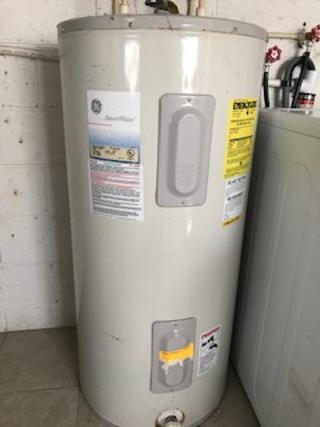Replacing a Water Heater
On the DYI scale, I would put replacing a water heater somewhere near the upper portion of difficulty skill level. You will need a few specialized tools and knowledge of how to make good, safe plumbing, electrical and/or gas connections. If you are unsure if you can do this yourself then be sure to leave it to a professional. If, however, you have enough experience to feel you can do this yourself, then I will offer some tips to make the job go a little easier.
1.) Pick out a replacement: I recommend finding a replacement as similar as possible to the one you have in physical size, capacity and style. For instance, if you upgrade to a larger capacity, will you have the actual physical space to get it in same location? By sticking to what you had before, and what worked before, you can avoid potential unforeseen difficulties.
2.) Shut of power/ turn off the gas: Before you work on anything electrical, always turn off the power. Water heaters will have a separate breaker in the electrical panel and are usually easy to identify. When you have turned the breaker off to the water heater, check to make sure power is off with a pocket tester. Now that power is off you can begin to drain the tank.
3.) Turn off water valves: Most water heaters have inline valves near the tank to turn the cold water off going in and to turn the hot water off going out. Turn these both off.
4.) Drain the tank: Water heaters have a drain valve near the bottom of the tank and you will need to attach a garden hose to it and run it outside. Turn on the drain valve and lift the pop-off valve up on top of the tank to allow air into the tank. Water should begin to flow out of the hose. If it does not you may need to briefly re-open the cold water valve to pressurized the tank. This will usually cause the water to start flowing through the hose. Immediately turn the cold water valve back off. Once the tank is drained, you can begin the removal process.
5.) Disconnecting the water lines: There are several kinds of water lines and each has it needs as far as taking apart and replacing. If you have copper lines, then you will need to cut those lines about 6 inches above the existing water heater. I recommend using a small tubing cutter. It works in tight places and makes a clean straight cut, which will help when you are putting things back together later on. CPVC water lines will need to be cut as well. To avoid cracking or breaking them and to also have a clean cut, I will often use a tubing cutter on them as well. It takes a little longer but is worth the effort.
6.) Remove electrical/ gas connections: Since you have double checked that your electricity is off, go ahead and take your electrical connections loose. A helpful tip is to take a picture of your connections before you disassemble. If you have a gas water heater, make sure your gas valve that is near your water heater is turned off. Also a good idea is to take a picture before you disassemble. Go ahead and loosen your gas line connectors. You may smell a little gas but that is normal. In the case of the gas water heater, you will also need to remove the exhaust pipe from the chimney on top of the water heater. Once everything is loose and since the water is drained from the tank, you can move the tank.
7.) Installing the new tank: With the old tank out of the way, simply put the new one in its place being careful not to damage the water heater pan. If you have someone that can help you lift it and put it in the pan that would be best. I have found that the easiest way to re-connect the plumbing lines is to use “shark bites”. These slip on fittings if installed properly make for fast dependable connections. No need for sweating on copper fittings or gluing of CPVC couplings. Most new water heaters will require that you install new female adaptors into the top of the heater for the Hot and Cold water lines. I usually get a female adaptor to CPVC with galvanized threads and install using plumber’s pipe thread compound. Then I glue a short piece of CPVC to bring me close to the copper or CPVC. Then finish off the connection with the “shark bite” connector.
8.) Finishing the Install: After the water lines are reconnected, install the pop-off valve overflow pipe running it either to an outside drain or into the water heater drain pan. If you run into the drain pan, make sure you leave a little room for the pipe and run the pipe about an inch from the bottom of the pan to allow the flow of water to be unrestricted. Re-wire the electrical connections or if a gas heater re-attach the gas lines making sure you use the proper pipe thread compound. If it is not rated for gas, then make sure you get some that is.
9.) Final checks: After everything is hooked back up. Turn the water valves back on and go turn on the hot water at a nearby sink to allow for air to escape as the tank fills. While the tank is filling and after it is filled, inspect the water line connections carefully for any leaks. If electric, turn on the power and listen to see if you can hear the elements humming to indicate the heater is working. If gas, turn the gas valve on and light the pilot. Smell for gas leaks. Also take a few moments and spray soapy water on all of the gas line connections you made. If you use the correct thread compound, you shouldn’t have any gas leaks…but if there is a leak the soapy water will allow bubbles to form to let you know that there is more work to be done.
Once everything is hooked back up correctly and the water is heating, you can soon get back to enjoying those hot showers again!
The links to external sites in this post are affiliate links, and we will be compensated when you make a purchase by clicking through our links.


